
Top 20 American Classic Rock Bands of the ‘80s
by Ultimate Classic Rock StaffDuring the '80s, much of the best rock music being made came from the U.S., and we're honoring the best of it with our look at the Top 20 '80s American Classic Rock Bands.
The ‘80s proved to be a time of massive rock domination, with hair metal, glam rock and new wave opening doors for new artists, while also providing further inspiration for previously established acts. Technology also played a major role in shaping rock, as the experimentation with electronic keyboards that first bore fruit in the '70s expanded when digital synthesizers, programmable drum machines and sequencers became commonplace, and guitar-based acts looked to incorporate them into their sound.
Whittling our list down to just 20 bands was difficult, especially given the abundance of worthy nominees. For the purposes of this exercise, groups were graded only on the work they delivered between 1980 and 1989. We look at how they worked through the unique artistic and commercial challenges that the '80s presented to them.
Solo artists were excluded, meaning Bruce Springsteen, Stevie Nicks, Billy Joel and many other vaunted stars are absent from our list, as were bands with multi-national lineups, like Fleetwood Mac and Foreigner (although an exception was made to one group due to an American being the sole constant member). In the end, we came up with an impressive collection of bands from throughout the era. Naturally, many of the big names made the cut, including Guns n’ Roses, Van Halen, Bon Jovi and Motley Crue. Read on to see exactly where they landed in our list of the Top '80s American Classic Rock Bands.
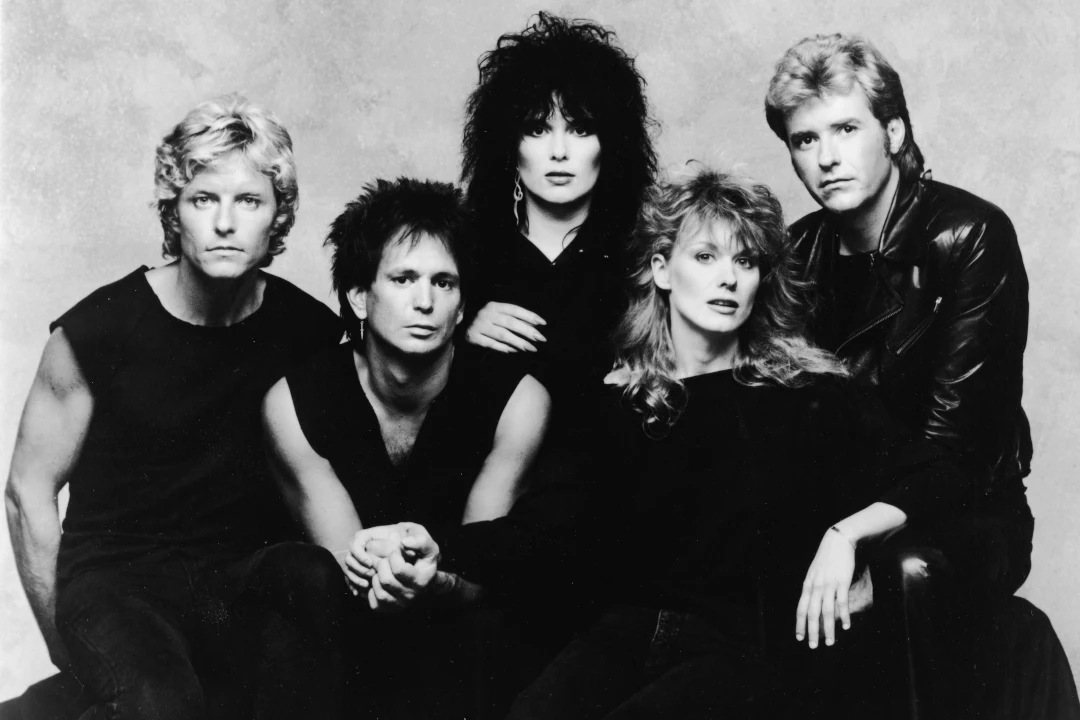
20. Heart
After releasing four albums in the ‘70s, all of which sold a million copies or more, Heart began the ‘80s in a lull. Their first three LPs of the decade - ‘Bebe le Strange’ (1980), ‘Private Audition’ (1982) and ‘Passionworks’ (1983) - failed to find an audience. Poor sales led the band to be dropped by its label, though they were eventually picked up by Capitol. One stipulation of their new contract was that they’d have to collaborate with outside writers. The decision led to some of the most commercially successful songs in the band’s career. 1985’s self-titled LP sold over five million copies thanks to hits like “What About Love,” “Never” and “These Dreams.” 1987’s ‘Bad Animals’ sold another three million copies, thanks in no small part to the massive power ballad “Alone.” Internally, the Wilson sisters struggled with the way their band was handled and marketed, but it’s difficult to argue with the results. A decade that began with downward momentum became one of the defining eras for Heart.

19. Red Hot Chili Peppers
The ‘80s marked Red Hot Chili Peppers’ formative years, with singer Anthony Kiedis, bassist Flea, drummer Jack Irons and guitarist Hillel Slovak starting the group in 1983 (the latter two musicians would leave the band at various points, only to return later in the decade). The members were high school classmates who focused much more on their extracurricular activities than their traditional education. A self-titled, debut album would be released in 1984, showcasing the group’s unique blend of funk and rock. Sophomore LP ‘Freaky Styley’ would come out a year later, produced by the legendary George Clinton. 1987’s ‘The Uplift Mofo Party Plan’ would follow. Due to constant lineup changes, it would be the first time that all four founding members of the group appeared on the same LP. It would also be the only such instance, as Slovak died of a drug overdose in 1988. Irons departed the group soon thereafter, with Chad Smith taking his place. John Frusciante was recruited as the band’s new guitarist, completing what most fans now recognize as the “classic” Red Hot Chili Peppers lineup. The band’s final LP of the decade was 1989’s ‘Mother’s Milk.’ The album represented their first commercial breakthrough, selling more than 500,000 copies. Singles “Knock Me Down” and a cover of Stevie Wonder’s “Higher Ground” would earn significant radio airplay, paving the way for the band’s further success in the ‘90s.

18. The Go-Go's
Like a shooting star, the Go-Go’s shone bright at the start of the ‘80s, only to burn out quickly. Though short, their impact on the decade was still impressive. It started with their 1981 debut album ‘Beauty and the Beat.’ The seminal new wave release spent six weeks at the top of the 'Billboard' album chart, while also breaking down walls for female groups. Thanks to the success of hit singles “We Got the Beat” and “Our Lips Are Sealed,” the LP went on to sell more than two million copies in the U.S., with the group receiving a Grammy nomination for Best New Artist. Sophomore effort ‘Vacation’ couldn’t match the success of ‘Beauty and the Beat,’ but still managed to spawn a hit single with its title track. 1984’s ‘Talk Show’ fared worse, with the weakest sales of the band’s releases to that point. Frustrated behind the scenes, the group’s members began fighting. Creative differences and, in some cases, drug addiction, only fueled the fire. In May of 1985 the Go-Go’s disbanded, staying apart for the remainder of the decade.
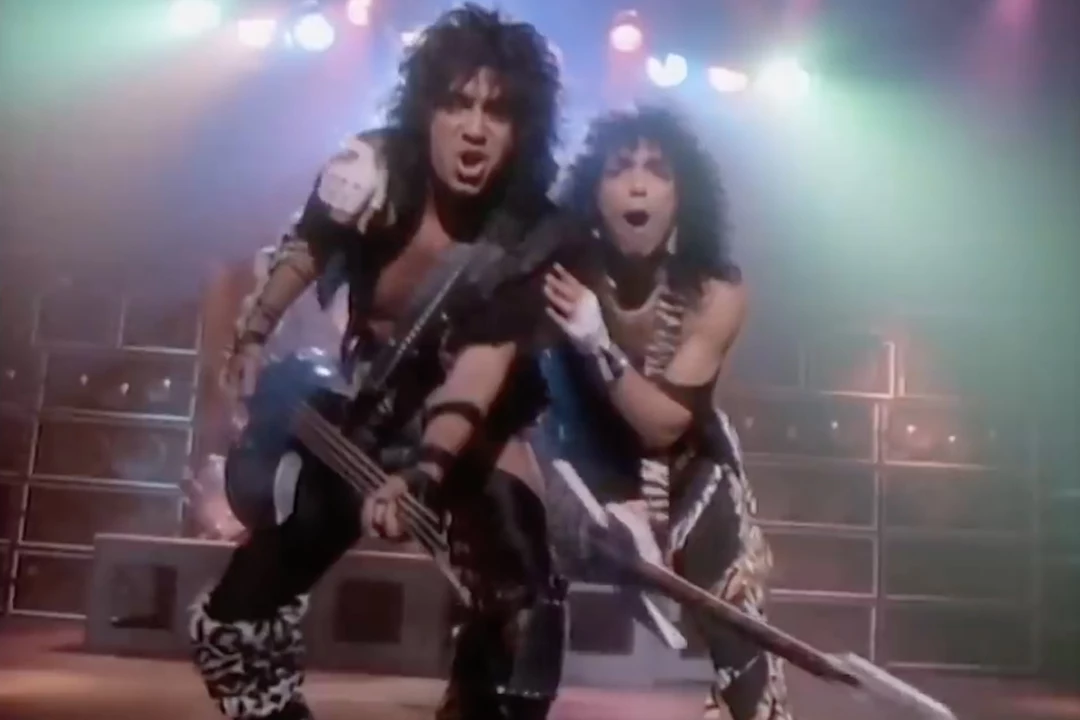
17. Kiss
Kiss was driving on flat tires at the start of the '80s, and their first two albums of the decade almost ran them straight into a brick wall. Fan-alienating experiments with disco and pop, the loss of half of their original lineup and one spectacularly ill-advised concept album seemed certain to spell the end for one of the '70s most popular bands. But amazingly, they were reborn creatively on 1982's 'Creatures of the Night,' and the daring Hail Mary they threw the following year - taking off their makeup and streamlining their sound for the hair metal era with "Lick It Up" - actually worked. They may not have been leading the pack anymore, but Kiss were once again arena headliners, and hits such as "Heaven's On Fire," "Tears Are Falling" and "Forever" kept them in heavy MTV rotation, even if Gene Simmons didn't quite know what to do with himself without all the armor and greasepaint.

16. Huey Lewis and the News
Huey Lewis and the News began the ‘80s as an unknown group from San Francisco. They ended it as one of the most bankable acts in music. Though their 1980 self-titled LP failed to garner much attention, it helped solidify the band’s clean, pop-rock sound. The group would get its first taste of success on their sophomore album, ‘Picture This,’ when “Do You Believe in Love” became a Top 10 hit. Follow-up singles "Hope You Love Me Like You Say You Do" and "Workin' for a Livin'" also did moderately well, paving the way for the band’s breakthrough success. 1983’s 'Sports' found the group clicking on all cylinders, churning out radio-friendly hits that helped catapult the band to global fame. Singles "Heart and Soul," "I Want a New Drug," "The Heart of Rock & Roll" and "If This Is It" all peaked in the Top 10, with their videos receiving regular rotation on MTV. 'Sports' sold more than seven million copies in the U.S., making the band bonafide stars. In 1985, "The Power of Love" reached No. 1, propelled by its inclusion in the box office smash ‘Back to the Future.’ The track would also earn an Academy Award nomination for Best Original Song. The 1986 LP ‘Fore!’ kept the good times rolling, selling more than three million copies and spawning the hit song "Hip to Be Square." Things slowed for the band as the decade reached a close, but the impressive numbers speak for themselves.

15. Devo
After initially making a name for themselves in the late ‘70s, Devo really came into their own in the ‘80s. From a commercial standpoint, their biggest album of the decade was ‘Freedom of Choice.’ The 1980 LP sold more than a million copies and contained several of their biggest hits - including “Whip It,” “Girl U Want” and the titular “Freedom of Choice.” Though 1981’s ‘New Traditionalists’ failed to reach the sales numbers of its predecessor, it too contained a bounty of classic tracks, including “Through Being Cool” and “Beautiful World.” Devo’s gloriously weird brand of new-wave connected with audiences everywhere, with their otherworldly sounds only matched by their growingly bizarre attire. The group’s unique aesthetic had fans donning colorful jumpsuits, along with Lego-like “energy dome” hats. The band would release a total of five studio albums in the decade, adding ‘Oh, No! It’s Devo’ (1982), ‘Shout’ (1984) and ‘Total Devo’ (1988) to those already mentioned. Other artists may have sold more records or filled more arenas, but few could match Devo’s distinctive impact on the era.
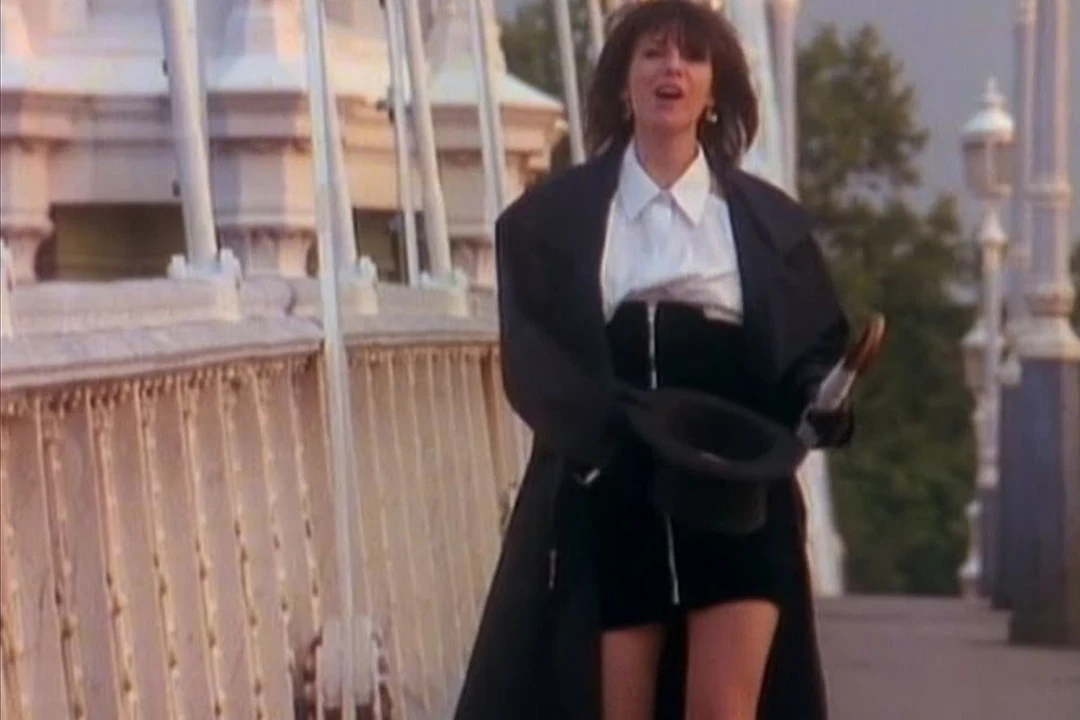
14. The Pretenders
Quibble if you want with their inclusion of American bands based on their beginnings in England, but Ohio-born frontwoman Chrissie Hynde has been the only constant member of the Pretenders. The group’s self-titled debut album was released in January 1980 and instantly made the band a commercial and critical success. Though the LP only featured one single which made the top 20 - “Brass in Pocket” - the release won over fans and has been hailed as one of the best debuts in rock history. A year later, the band returned with ‘Pretenders II,’ though it failed to build on the momentum created by its precursor. The LP would be the final release by the Pretenders’ original lineup, as both lead guitarist James Honeyman-Scott and bassist Pete Farndon died in drug-related accidents. Hynde and drummer Martin Chambers soldiered forth, enlisting new musicians and releasing the Pretenders’ third studio album, 'Learning to Crawl,' in 1984. Songs “Back on the Chain Gang", “My City Was Gone” and “2000 Miles” helped the group reestablish themselves as a rock mainstay. Though lineup changes continued to plague the group, the hits kept coming. 1986’s ‘Get Close’ spawned two of the biggest singles in the band’s career: “Don’t Get Me Wrong” and “My Baby.” A rigorous tour scheduled saw the band performing to packed houses across the world. Former Smiths guitarist Johnny Marr even briefly joined the group towards the end of the decade, though his stint was short-lived. By 1989 the band grew tired of the constant personnel changes and went on hiatus. The move closed an era of both triumph and turmoil for the Pretenders.

13. Blondie
Blondie’s ‘80s success was largely isolated to the first few years of the decade, but what a run it was. Three of the band’s four No. 1 singles were released between 1980-81, with “Heart of Glass” (1979) just missing the cut. The band’s chart-toppers included the supremely funky “Rapture” and breezy earworm “The Tide Is High.” While both of those tracks were featured on the 1980 LP ‘Autoamerican,’ arguably the band’s most impressive moment came on the soundtrack to ‘American Gigolo.’ Blondie performed and co-wrote the film’s theme song, “Call Me,” a driving, infectious ode to hedonism. The track not only matched the movie’s tone, but it perfectly captured ‘80s indulgence at the dawn of the decade. “Call Me” was a worldwide hit and 1980’s biggest-selling single in the U.S. Though things would turn south for Blondie - including 1982’s poorly received ‘Hunter’ album, followed by the band’s breakup later that year - there’s no denying that the group were major contributors to the ‘80s overall sound.

12. The Cars
Though the Cars had risen to fame in the late ‘70s, they really established themselves as the preeminent new wave group in the ‘80s. The era had an inauspicious start, as 1980’s experimental-leaning ‘Panorama’ LP was met with a tepid response. Still, 1981’s ‘Shake It Up’ generated excitement once again, earning platinum sales and scoring a hit with its title track. Following their 1982 tour, the band took a brief break, with members pursuing solo endeavors. They returned with a vengeance in 1984, delivering the most commercially successful album of their career. ‘Heartbeat City’ was one of the decade’s defining releases. Its songs “Magic,” “Why Can’t I Have You” and “You Might Think” were hits, with the latter earning Video of the Year honors at the inaugural MTV Video Music Awards. Still, it was “Drive” that proved to be the LP’s most successful track, the sweeping ballad becoming a Top 10 single in 10 different countries, including the U.S. The band’s final LP of the era arrived in 1987, but ‘Door to Door’ failed to live up to the standard set by their previous releases. In February of 1988, the Cars officially disbanded.

11. Bon Jovi
The early years of the decade were developmental for Jon Bongiovi. The fledgling rocker scored local radio airplay in New York thanks to his first single, “Runaway.” As the track generated buzz, the frontman assembled a band, including guitarist Richie Sambora. By 1984 the group had a record deal, a name and a debut album - ‘Bon Jovi.’ The LP included a re-recorded version of “Runaway,” which became a hit across America, peaking at No. 39 on the 'Billboard' Hot 100. Though a second LP, 1985’s ‘7800° Fahrenheit,’ failed to live up to expectations, it was the band’s third effort that launched the group to superstardom. Released in August of 1986, ‘Slippery When Wet’ became one of the biggest releases of the decade. Chart-topping singles “You Give Love a Bad Name,” and “Livin’ on a Prayer” earned the group heavy rotation on both the radio and MTV, as did the No. 7 "Wanted Dead or Alive." 1988’s ‘New Jersey’ further solidified Bon Jovi’s place among rock’s elite, spawning hits like “Bad Medicine,” “I’ll Be There For You” and “Born to Be My Baby.” Worldwide touring and the rigors of fame began to wear on the group, as physical and mental exhaustion took its toll. All of this would contribute to a brief hiatus to start the next decade, but as far as the ‘80s were concerned, Bon Jovi ruled the roost.
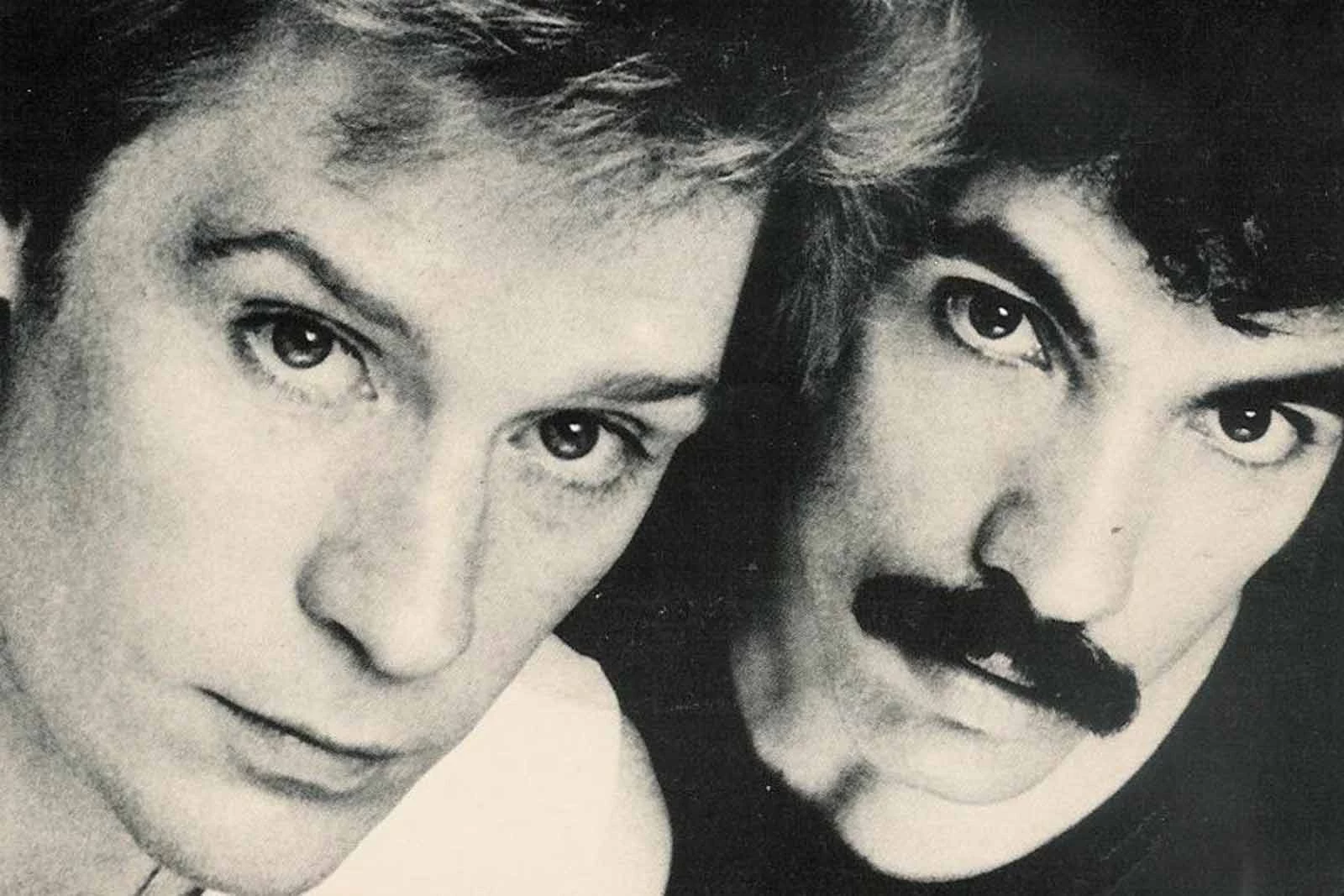
10. Hall & Oates
After their trio of mid-'70s hits had faded from the charts, Hall & Oates flipped their sound on its head, going from a blue-eyed soul band with pop leanings to a polished pop duo with soul inflections. The move worked better than anyone could have imagined. Beginning with 1981's "Kiss on My List," they chalked up an astonishing run of 12 Top 10 smashes, including five No. 1s, over the next four years en route to becoming the biggest duo of the rock era. They took a break from each other in 1986, with Daryl Hall putting out a solo album, 'Three Hearts in the Happy Ending Machine,' and Oates working with other bands. They came back together in 1988 for 'Ooh Yeah!,' which gave them another smash in "Everything Your Heart Desires," their last Top 10 hit.
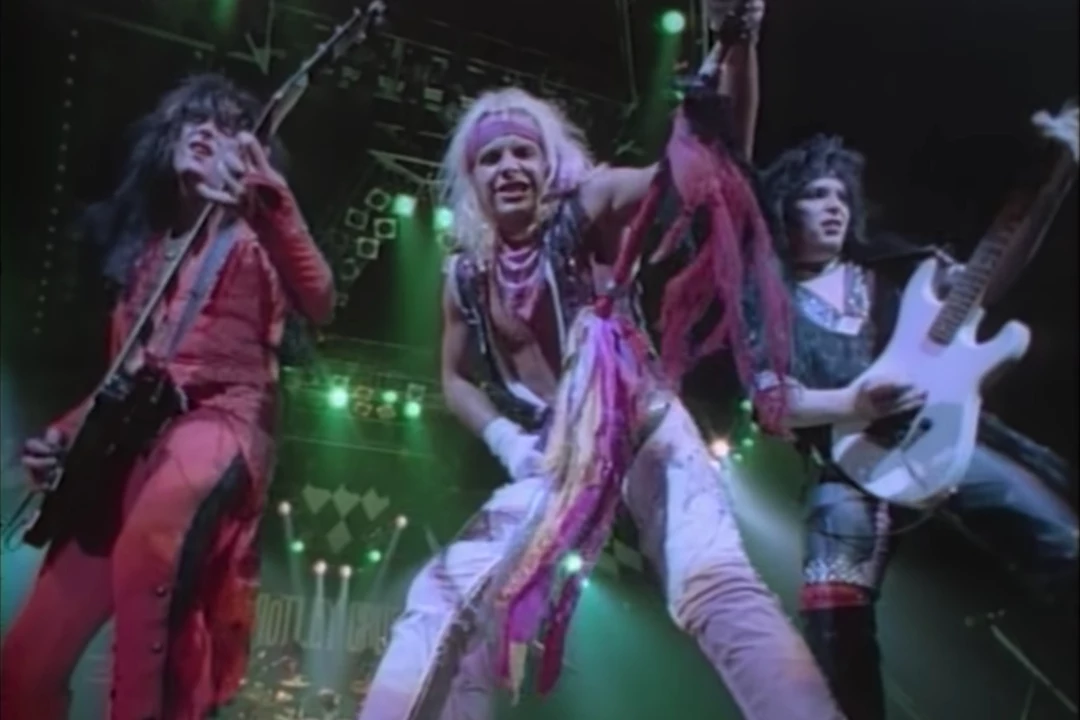
9. Motley Crue
The gravitas, the flamboyance, the extravagance, the spandex. Perhaps no band personified ‘80s rock better than Motley Crue. After cutting their teeth on the legendary Sunset Strip, the band emerged in 1981 with their debut LP ‘Too Fast For Love.’ Two years later, ‘Shout at the Devil’ would solidify their place as one of rock’s most exciting acts. Motley Crue’s notorious hard-partying ways got them kicked off tours, thrown out of clubs and, in some cases, arrested. Conservative groups decried the band for their sinful ways, while audiences lapped up their incredible live performances. The band would dominate the decade, with hits like “Home Sweet Home,” “Girls, Girls, “Girls” and “Dr. Feelgood,” the latter of which was the title track from their massively successful 1989 LP. Of course, the days of decadence weren’t always fun. On Dec. 8, 1984, frontman Vince Neil was involved in a serious car accident while driving under the influence. His passenger, Hanoi Rocks drummer Nicholas "Razzle" Dingley, was killed in the crash. Years later, bassist Nikki Sixx suffered a heroin overdose and was legally dead before a paramedic brought him back to life. Struggles with substance abuse, stints in rehab and clashes within the group would cloud the Crue’s latter part of the decade. In total, the group sold more than 20 million albums in the U.S.A. during the ‘80s, while also establishing themselves as the most dangerous band in the world.

8. Journey
At the dawn of the ‘80s, Journey were already a platinum-selling band. They began the decade by releasing ‘Departure,’ the successful LP which spawned the hit single “Any Way You Want It.” The band quickly turned around and released ‘Escape,’ the hugely popular 1981 album which would become their best-selling. The LP was loaded with radio hits, as "Don't Stop Believin'," "Who's Crying Now," "Still They Ride" and "Open Arms" all peaked in the Top 10. Stadium tours would commence, with the band selling out venues across the globe. A video game for the Atari 2600, 'Journey Escape,' was created, in which players tried to steer the band through throngs of groupies, photographers and promoters en route to their next gig. Journey didn’t show any signs of slowing with 1983's 'Frontiers,’ selling millions more and scoring hits with "Separate Ways (Worlds Apart)" and "Faithfully.” At their peak of popularity, the band took a brief break, with members pursuing solo efforts during the hiatus. When the group returned in 1986, it looked a little different, with bass player Ross Valory and drummer Steve Smith fired due to creative differences. Though their 1986 LP ‘Raised on Radio’ was still a commercial success, it failed to live up to the lofty expectations of its two predecessors. Frontman Steve Perry would depart the band in 1987, effectively putting Journey on indefinite hiatus for the remainder of the decade.
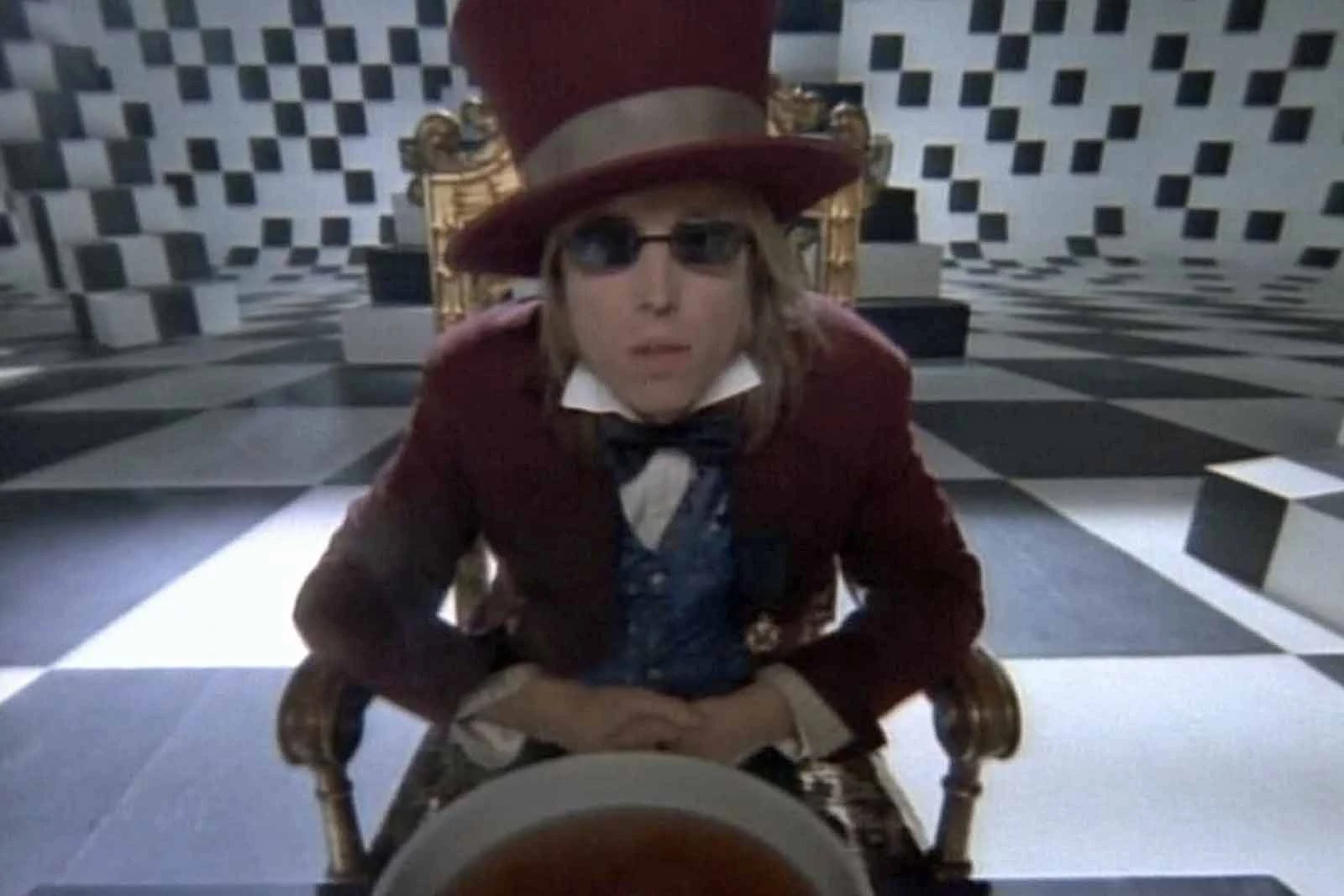
7. Tom Petty & the Heartbreakers
Tom Petty & the Heartbreakers entered the '80s as a rising star, with 'Damn the Torpedoes' released only a few months before the '70s ended. Unlike many established acts who were built on '60s ideals, Petty recognized early on the power of music videos as both artistic and promotional vehicles, and his innovative clips for tracks like "You Got Lucky" and "Don't Come Around Here No More" helped the tracks reach the Top 20. The second half of the decade nearly caught them on a downturn, but Petty rebounded in 1989 with the quintuple-platinum 'Full Moon Fever.' Although technically a solo album, it featured heavy input from Heartbreakers guitarist Mike Campbell and contributions from two of the other three members of the backup band.

6. Metallica
Formed in 1981, Metallica spent the decade leapfrogging from one milestone designation to another at a breakneck pace - best new metal band, coolest metal band, most important metal band. After topping themselves creatively and commercially with each of their first three albums, the band endured a terrible tragedy in 1986 with the tour bus crash death of bassist Cliff Burton. They not only soldiered on but opened themselves up to mass audiences in a big way with their first-ever music video, for 1988's 'One.' The group ended the decade as the undisputed kings of metal, and amazingly, the title of world's biggest rock band would soon be theirs as well.

5. ZZ Top
Unlike many of the bands on this list, ZZ Top didn't have to mount a comeback or overcome personal struggles in order to find their place in the '80s. Instead, a career that had been in a steady, decade-long ascent suddenly had the twin rockets of synthesizers and music videos strapped to its back. The perfectly computer-enhanced slickness of 1983's 'Eliminator,' combined with a series of humorous videos that turned the band into MTV's least likely cover boys, sent the Texas trio into the stratosphere. They half-successfully tried to double down on 1985's even more digitally dominated 'Afterburner,' and closed out the decade as one of rock's most popular live attractions.

4. Aerosmith
Aerosmith limped into the '80s at 60 percent strength, with guitarists Joe Perry and Brad Whitford both having departed prior to the completion of the band's first album of the decade, 1982's 'Rock in a Hard Place.' The original fivesome reunited a couple of years later for a tour and a 1985's tragically underappreciated 'Done With Mirrors.' But it wasn't until the group collectively got sober and welcomed outside songwriters on 1987's 'Permanent Vacation' that they became superstars again. That dazzling album, and their even stronger 1989 follow-up 'Pump,' spawned a seemingly unending parade of radio and MTV hits that cinched Aerosmith "comeback of the decade" honors.

3. R.E.M.
The '80s were barely four months old when the unnamed quartet that would become R.E.M. played their first show at a friend's birthday party. The decade saw the Athens, Ga.-based group slowly build their fanbase gig-by-gig, album-by-album, mixing the folksy Rickenbacker jangle of the Byrds with post-punk energy and Michael Stipe's obtuse, occasionally indecipherable lyrics. But the switch to John Mellencamp producer Don Gehman for 1986's 'Lifes Rich Pageant' helped open up their sound and, after their commercial breakthrough with 1987's 'Document,' they had enough clout to demand creative control from a major label. R.E.M. left indie I.R.S. Records to sign with Warner Bros. and closed out the '80s with 'Green.' Along the way, they paved the way for the alternative revolution of the '90s by serving as the template for bands to become popular while maintaining their artistic integrity.
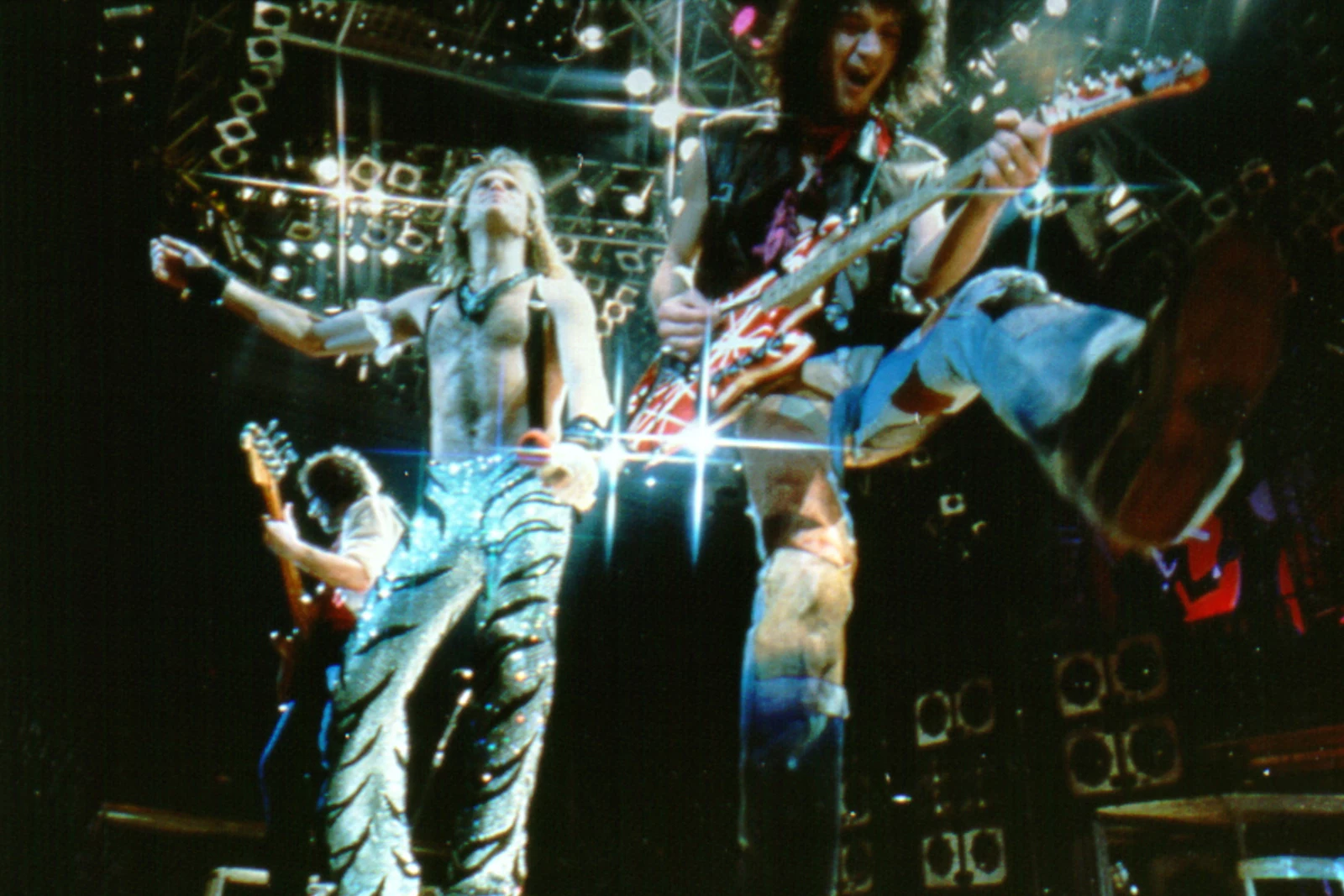
2. Van Halen
Van Halen enjoyed the most consistent commercial dominance of any '80s rock band, releasing no less than six different multi-platinum albums between 1980 and 1988. Even more impressively, they did it with two very different lead singers, barely missing a beat after replacing David Lee Roth with Sammy Hagar in 1985. (If you include the singers' respective '80s solo careers, you can add five platinum and two gold albums to that extended family count.) Already the leader of a new generation of guitar wizards, Eddie Van Halen also managed to almost single-handedly introduce keyboards into hard rock courtesy of the band's first and only No. 1 hit, "Jump."
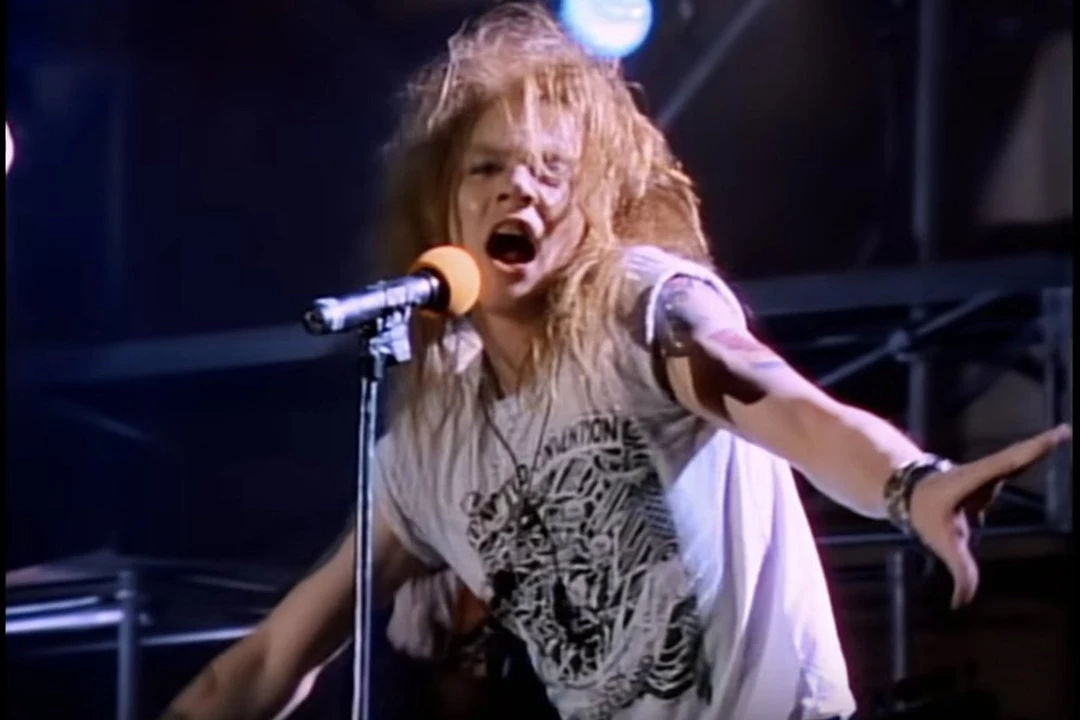
1. Guns N' Roses
After spotting every other American band on this list a six-year head start, Guns N' Roses rocketed to the front of the pack largely on the strength of just one studio album. But 'Appetite for Destruction' represented a true generational seismic shift, instantly stripping away the artifice and excess that had crept into mainstream rock music. Compare group photos of, say, Poison before and after Axl Rose and company arrived and you'll get a sense of just how quickly the scene changed. The half-album's worth of new acoustic material on 1988's 'GN'R Lies' proved the band wasn't a flash in the pan, and they spent the rest of the decade picking fights, setting new standards for debauchery and prepping the sprawling 30-track 'Use Your Illusion' albums.